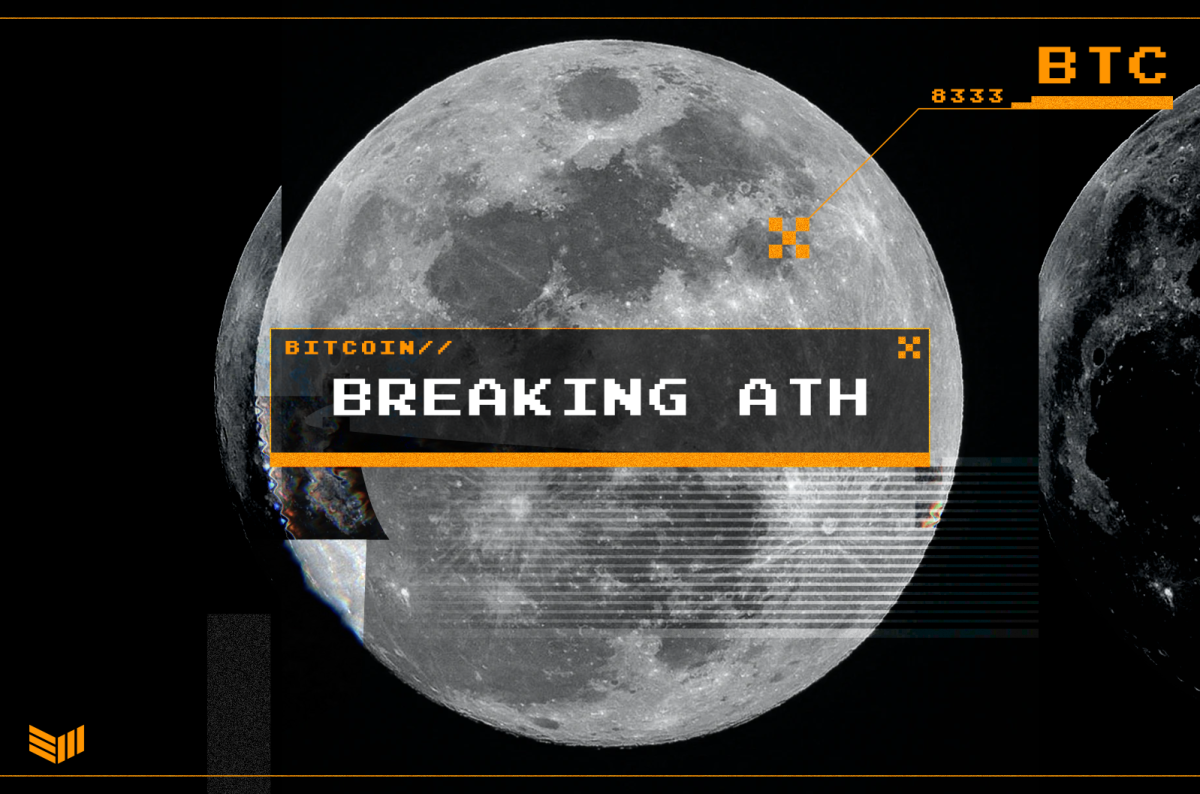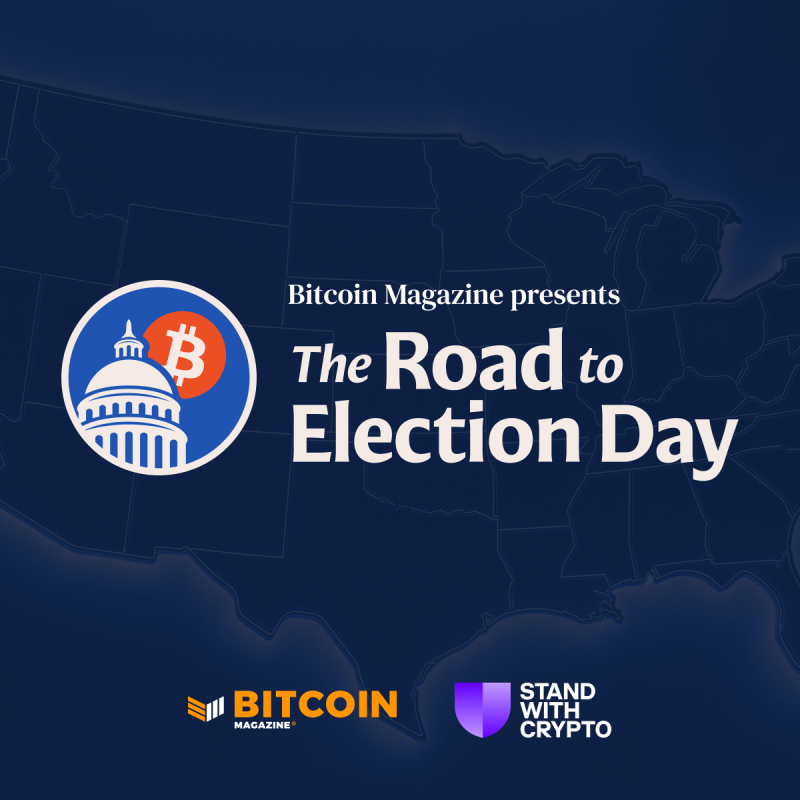Category: Crypto
MicroStrategy CEO Michael Saylor Reveals His Bitcoin MSTR Plan
“It’s mostly paranoid crypto anarchists that say that.”
With these eight words, issued on the “Markets with Madison” podcast, Microstrategy CEO Michael Saylor evoked outrage from just about everyone in Bitcoin.
Shinobi called him a “spook.” Carvalho was confused. Svetski claimed this will start the next Fork Wars.
Put simply, Saylor said a bad thing. He broke the taboo. He said you’re better off trusting your Bitcoin in state custody than holding your own private keys, then went further, calling out all of the businesses engaged in custody projects by calling them effectively bullshit salesmen.
It was, shall we say, a “big oof,” a “footgun,” the scene in the cartoon where the hero gets hit with an anvil.
Here’s Adam Simecka’s clip from the full video:
Saylor thinks you are a paranoid crypto anarchist if you hold your own keys and don’t trust the government. 😏 pic.twitter.com/6owj7LzrdM
— Adam Simecka (@AdamSimecka) October 20, 2024
Yet, paradoxically, I’ll admit, it’s probably the most interesting thing Saylor has ever said?
For years, Saylor and the Cyber Hornets have been “Grut and the Minions,” Saylor using his pulpit to spout whatever bullish nonsense was in vogue, without adding anything of his own.
Other people said things, and then Saylor said them again. He was the “people’s champion,” a “man of plebs,” a role that even his mundane AI generated tweets seemed to underscore in tagging the artists, invariably some random pseudonym.
So, anger aside, I have to say, at this time, I’m undecided. Sure, as someone who lived through the Fork Wars, I find Svetski’s position romantic (It’s nice to think we’re in the midst of some larger struggle), but it’s perhaps too early to cry wolf.
Instead, I find myself (for once) actually trying to understand what Saylor is saying.
As far as I can tell, there’s really three ideas at play here:
This is a new thesis for how to boost Bitcoin adoption using public markets – Saylor is framing the self-custody question as not an issue to solve with innovation, but an issue to ameliorate. His view: It doesn’t matter how people own Bitcoin, only that they do. His preferred vehicle for this is the stock market, and he seems to want to co-opt it as a massive vehicle for buying Bitcoin and selling the exposure.
This thesis actually might solve the problem of how to fight the crypto market – This is also one of the more compelling things about Bitcoin “Season 2,” the idea you could “co-opt the crypto apparatus” as a means of getting retail involved. Here, Saylor seems to want to marshal his army of Bitcoin stocks for the purpose, his view retail will begin purchasing Microstrategy and Metaplanet, in lieu of memecoins, chasing as they always do, beta on Bitcoin.
It’s a novel thesis on convincing government to adopt Bitcoin – A world where Bitcoin is the reserve asset for regulated entities seems like one in which draconian laws become less viable. After all, in this world, Bitcoin would have a direct link to the U.S. economy (at least the version most politicians care about). You have to admit: “You can’t ban Bitcoin, it will hurt the stock market,” has a nice ring.
Of course, maybe the commentators are right. Saylor’s incentives seem to be departing from the network. Maybe he is placing his company and its quest to amass Bitcoin above all else, and it’s worth questioning his motives at this moment.
Some argue self-custody, if nothing else, is the core of Bitcoin, the fact that you can trust no one but yourself to hold and safeguard your wealth.
Then again, in Saylor’s view, inflation is the true boogeyman, the debasement of purchasing power, the far bigger issue.
Is it possible this is a giant government psy-op, that Saylor flew too close to the sun, and there are an army of regulators who are twisting his arm to say this?
Sure, Microstrategy does work with intelligence agencies, but even then, intelligence agencies and their pension funds need somewhere to invest. A hyperbitcoinized world is surely one where these funds will also buy Bitcoin.
But I have to say, as someone who has never found Saylor very interesting… for now, I’m at least paying attention.
I’ll start there.
This article is a Take. Opinions expressed are entirely the author’s and do not necessarily reflect those of BTC Inc or Bitcoin Magazine.
6 steps to move an old 401k into a bitcoin IRA
Bitcoin could be on the verge of a major new bull run. According to Tuur Demeester of Adamant Research, in his publication How to Position for the Bitcoin Boom, we may be in the early stages of a new multi-year bull market that could propel bitcoin prices into six figures.
“During this accumulation phase, we expect bitcoin to trade in a range of $22,000 to $42,000, until a new multi-year bull market pushes it well north of $120,000,” Demeester noted.
Imagine securing a substantial allocation of bitcoin before this bull run begins—an allocation that could appreciate completely tax-free, funded by an old retirement account that you might have totally forgotten about!
Step 1: Purchase hardware wallets
The first step is obtaining the tools you need to ensure your bitcoin is secure. A hardware wallet allows you to store your bitcoin keys offline, giving you full control of your funds.
Begin by purchasing a couple of hardware wallets, such as those offered by Trezor or Ledger. Unchained currently supports a range of devices, including the Ledger Nano X, Trezor Model T, and Coldcard Mk4. Check out the full list of hardware wallets Unchained supports.
For optimal security, it’s recommended to buy directly from the manufacturer, but purchasing from a trusted third-party retailer, like Best Buy, is also acceptable. This is especially true in the context of multisig which eliminates any single key as a single point of failure.
Make sure to get at least two wallets—you’ll need both to set up your Unchained IRA vault.
Step 2: Create an account on Unchained.com
Next, go to Unchained and create an account. The process is simple: provide your name, email, phone number, and create a strong password. Unchained takes your privacy seriously.
Once your account is created, select the type of account you need—in this case we’re creating an IRA account. If you prefer personalized assistance, consider opting for Unchained’s Concierge Onboarding, where a bitcoin custody expert will guide you through every step.
Step 3: Create your Unchained IRA account—with no setup or account fees for the first year!
Now it’s time to set up your IRA account. With an Unchained IRA, you can save bitcoin in a tax-advantaged manner while maintaining full control of your keys. There is no third-party risk because you hold the keys—ensuring that no one else can access your bitcoin.
Setting up an account is straightforward—there are no setup fees, account fees don’t start until the second year, and you can see trading fees on our pricing page. Unchained’s IRA offers both Traditional and Roth options, allowing you to choose the best fit for your retirement strategy.
Step 4: Follow the Self-Service guide for vault setup
After setting up your account, it’s time to set up your multisig vault—one of the most secure ways to secure bitcoin. Multisig requires more than one key to authorize a transaction, which mitigates the risks associated with custodian and exchange hacks, bad business practices, or individual mistakes.
You can set up this secure multisig configuration in under an hour using Unchained’s Self-Service Onboarding. Simply follow the guide at diy.unchained.com to get started—if you’re using two hardware wallets to build your vault, you’ll choose the Lead custody model.
Step 5: Roll over your existing 401k/IRA
Next, you’ll need to fund your new IRA, and there are a few ways to do it: an IRA-to-IRA transfer, a 401(k)-to-IRA rollover, or an annual contribution. The most common method is rolling over funds from an existing 401(k) or IRA into your new Unchained IRA.
While this process can feel tedious—particularly if your 401(k) administrator needs to issue you a physical check—it is straightforward. Once you receive your funds, Unchained will convert them to bitcoin with our trading desk and deposit them into your IRA vault.
If you already hold bitcoin in another IRA, you can do an in-kind transfer to move your bitcoin directly to Unchained without converting to cash first. If you want to learn more about how to fund your IRA, we have a full Knowledge Base article for that.
Step 6: Enjoy the benefits of tax-advantaged bitcoin
Congratulations—your retirement savings are now secured in bitcoin! Unchained offers flat annual fees. Starting in year two, you’ll pay a flat $250 annual fee for your IRA account.
Holding bitcoin in a tax-advantaged account combines the inflation resistance of bitcoin with the benefits of an IRA. Most importantly, you remain in charge of your bitcoin—not an exchange or third party. If the bull run is approaching as many suspect, the Unchained IRA could put you in position to watch your retirement savings grow.
This article is provided for educational purposes only, and cannot be relied upon as tax or investment advice. Unchained makes no representations regarding the tax consequences or investment suitability of any structure described herein, and all such questions should be directed to a tax or financial advisor of your choice. Statements regarding market or other financial information, are obtained from sources that we believe reliable, but we do not warrant or guarantee the timeliness or accuracy of this information.
What The ECB Gets Wrong About Bitcoin
Follow Frank on X.
Last week, Ulrich Bindseil and Jürgen Schaaf of the European Central Bank (ECB) published a paper entitled “The distributional consequences of Bitcoin” in which they made a host of dubious claims about Bitcoin.
The notions that those who are late to investing in bitcoin are impoverished by those who were early to investing in it and that Bitcoin has failed as a payments technology are the authors’ central arguments.
Bitcoin analyst Tuur Demeester sounded the alarm about the report on X.
1/ This new paper is a true declaration of war: the ECB claims that early #bitcoin adopters steal economic value from latecomers. I strongly believe authorities will use this luddite argument to enact harsh taxes or bans. Check 🧵 for why: pic.twitter.com/qg31YenTSC
— Tuur Demeester (@TuurDemeester) October 19, 2024
As a former academic, I was appalled at how lazy the arguments in this paper were. Hence, I’ve taken the time to push back on some of them.
The main premise of the paper is that if bitcoin’s price continues to rise, early bitcoin investors — the “early birds” (the authors’ term) — will gain wealth at the expense of the “latecomers.” While this is true if the early birds hold all of their coins to no end, the dynamic is no different with any other publicly-traded asset. The bigger point that the researchers miss, though, is that some of us are both “early birds” and “latecomers.” I first bought bitcoin in January 2018, and I also bought some last week. Did I impoverish myself in this scenario? No, I didn’t. Nor has anyone who has dollar-cost averaged into bitcoin over any period of time. Also, I bought some gold earlier this year. After doing so, I didn’t shake my fist at the sky yelling “Damn all of you who have front run me to gold over the last 5,000 years!” I simply made the purchase in efforts to preserve my wealth in a highly inflationary environment — one that the ECB itself is partially responsible for causing — and went about my day.One of the other primary arguments in the paper is that Bitcoin has failed as a payment technology. In making this claim, the authors fail to even mention the Lightning Network, a layer built on top of Bitcoin that enables fast, cheap bitcoin payments. In recent years, the Lightning Network has grown exponentially. From August 2021 to August 2023, the network grew by 1212% — which occurred mostly during a bitcoin bear market. Major players from the world of traditional payments are building on Lightning, as well. A prominent example of this is David Marcus, former President of PayPal, who is the current CEO of Lightspark, which is building enterprise-ready payments infrastructure via the Lightning Network. Beyond Lightning, Bitcoin is still quite young and will likely need to be more fully monetized (less volatile in fiat money terms) before people begin using it more frequently using it as money.Throughout the piece, the authors bring up how bitcoin and other cryptocurrencies are the preferred currencies of criminals and bad actors worldwide. While there’s little evidence that proves this to be the case, as methodology of Chainanalysis — the blockchain analysis firm often employed to look into crypto and criminal activity — is questionable at best. Terrorist organizations like Hamas have stopped relying on crypto donations because of their traceability. With that said, TD Bank was just fined $3 billion for enabling money laundering, while Wells Fargo is currently in the crosshairs of regulators for doing the same. And data shows that criminals prefer cash above all else when committing crimes. Lastly, I made two purchases last week with bitcoin and I can assure you that neither were illegal. And I’m not the only one who recently made perfectly legal purchases with bitcoin.
The authors also make the claim Bitcoin is a threat to democracy because crypto PACs now donate to politicians. The presupposes that every other lobbying group out there isn’t a threat to democracy, which is laughable. What the authors also missed is that bitcoin is often a money of last resort for pro-democracy activists who’ve been debanked by authoritarian regimes. One of the first moves in the modern dictator’s playbook is to cut dissidents off from the traditional financial system. In these cases, pro-democracy activists have to rely on bitcoin and other cryptocurrencies. Alexei Navalny, Vladimir Putin’s former opposition, popularized using cryptocurrencies for donations when the Putin regime limited its access to traditional financial rails.The authors also suggest that central banks can just tighten monetary policy to counteract the “bubble” forming in bitcoin’s price. The last two years have proven that this isn’t true, as rates are just about the highest they’ve been in over a decade and a half, yet bitcoin’s price is still on the verge of approaching an all-time high in US dollar terms. Plus, tightening from the US Federal Reserve, the central bank of the US, led to the collapse of Silicon Valley Bank (SVB) as well as other banks in 2023, highlighting the fact that tightening makes the traditional financial system more fragile. This only makes a stronger case for people to store their wealth outside of the traditional system in an asset like bitcoin.
Beyond these points, the tone of this paper from the ECB is paternalistic in that it suggests that all retail investors are incapable of learning more about how markets work and why Bitcoin is important.
Toward the end of the report, Bindseil and Schaaf cite a source that claims that “unsophisticated investors are drawn into the market” as the bitcoin bubble grows, seemingly suggesting that everyone one of these retail investors only buys at the top and sells toward the bottom of a drawdown.
I was once one of those unsophisticated retail investors, and while I first bought bitcoin near its 2017 top, I also bought it on dozens of other occasions, including when its price dipped to local lows in 2018 and 2020. I did so because in studying Bitcoin and learning what problems it solves I came to place more faith in it than I did in the traditional monetary and financial systems.
There are many others like me, and I’d imagine that they too take offense to the ECB’s diminishing their intellectual capabilities and writing deeply biased reports that misrepresent what Bitcoin is and the reasons why people invest in and adopt it.
Upside Down World: Spooks are Heroes, Heroes are Spooks
This space is suffering from a problem of inverted perceptions. What makes Bitcoin valuable in the first place is its decentralized nature. The fact that it is a distributed system, with no central point of control, no central point of influence, not even a central point of interface for its users. This is the source of its resiliency and reliability. Without this property, without the ability to simply download a piece of software and start interacting with it, there is really no value to be found.
It’s fundamentally no different from a bank database at that point. No one can be guaranteed access when someone (the operator) wants to take it away, no core properties like the supply cap or inflation rate can be guaranteed when someone (the operator) can change them at a whim.
Many people in this space cheer on the erosion of these properties at this point. They champion solutions like ETFs and other custodians as a pathway to pumping the price and increasing their own fiat denominated net worth. They attack those working towards and advocating for solutions that don’t compromise the core value propositions of Bitcoin, painting them as spooks “risking what makes Bitcoin valuable.”
It is a complete inversion of reality. The Spooks are Heroes, and the Heroes are Spooks.
Saylor is literally defending custodians as a superior path to adoption than self custody. He is comparing people building and selling tools for self custody to FUDsters and fear mongers, or “paranoid crypto anarchists.” Painting the people who are building the tools necessary to defend and maintain the core properties of Bitcoin that give it value in the first place. He totally ignores the dynamics that led to gold and its role as a sound money to melt away over time as governments interfered and manipulated it.
They accomplished this because all of the gold was held by custodians, no one held it themselves. No one directly used it, everyone choosing to use paper substitutes disconnected from the precious metal itself instead. Bitcoin can very much suffer the same fate. Whether through paper bitcoin diluting market demand, or custodians outright gaining influence over the consensus process and outright changing rules to suit their own needs and wants.
Bitcoin is a social consensus system, its nature is defined entirely by actors who participate in the system. The scale of those actors, their own individual nature(s), the vulnerability to government interference, how many of them make up the majority of economic activity (more being better, less being worse), all of these things factor heavily into how Bitcoin will evolve and exist as a system.
Many people in this space are cheering on short term actions that compromise its resilience in the long term as a neutral and decentralized system for perceived short term benefits in the form of price appreciation and economic gains. Developers working diligently and with little gratitude to maintain those core properties that give it value are attacked as spooks and government agents, while corporate suits and actual spooks attacking those properties are cheered on as heroes.
The world in this space is upside down.
This article is a Take. Opinions expressed are entirely the author’s and do not necessarily reflect those of BTC Inc or Bitcoin Magazine.
A Kamala Presidency Could Be Just as Bullish for Bitcoin
Yes, I know, you’re here to let the hate flow.
You’ve bought all the rhetoric. Donald Trump likes crypto. He is embracing DeFi. He has his own shoes, and coins. He’s going to fire Gary! Like Polymarket in October, you think Trump is boo-llish.
Unfortunately, you’ve bought a lot of another kind of bull.
To unpack this, we have to understand what the Crypto 4 Trump initiative really is – and that’s an alliance of largely public U.S.-based mining firms and exchanges that have come together to spend aggressively to end their mistreatment.
They are tired of being sued and harassed, and otherwise chased out of America. As well, they have every reason to be.
But alas, the industry Bitcoin is not. This was the same argument made to justify the Fork Wars, and let’s just say for summation, that this ended terribly. If U.S. miners are forced elsewhere, mining will continue elsewhere, and decentralizing the hashrate, as we saw in the case of China’s mining ban, is quite simply: Good For Bitcoin™.
Sure, ASIC manufacturing may remain consolidated in a few international firms. Maybe it will take even longer to rebuild. But other countries will take advantage, and the Bitcoin network will carry on. Bitcoin may be our best opportunity to topple all of the current superpowers, and to empower the developing world. If that means leaving the U.S. behind, so be it.
Now let’s address the donkey in the room. A Kamala presidency will mean more enforcement of U.S. securities laws, not a referendum that allows millions of alts to proliferate.
A Trump victory almost certainly ensures only one outcome for our industry, and that is that the SEC gets defanged, and that means “coins beyond Bitcoin” will get a “level playing field.”
By contrast, continued enforcement of the SEC’s securities laws on the industry will rightfully make clear the difference between Bitcoin, which was distributed via proof-of-work (the only known way to circumvent securities sales), and all of the many centralized variants.
Simply put: It’s “crypto assets” that require a regulatory framework to survive, not Bitcoin, which is sufficiently decentralized.
Forcing the crypto industry’s builders to abide by these laws will doubtless benefit developers seeking to extend these capabilities to Bitcoin, the only major crypto with regulatory clarity. Are we actually going to argue that encouraging millions of developers to put their technology on Bitcoin (as opposed to Ethereum or Solana) would be a bad thing?
If there is a coherent thread to Bitcoin maximalism, it’s the assertion that everything outside of Bitcoin is either 1) a scam or 2) can be built on top of its blockchain. A continued crackdown on crypto will push the market to more thoroughly investigate the second point.
Undoubtedly, it would also boost Microstrategy’s stock, MSTR, as it would remain one of the few widely accessible plays to get legitimate beta on Bitcoin.
Sure, maybe the taxes from your Bitcoin gains will be higher, maybe spending will continue to be penalized. But anon, I thought you were HODLing anyway?
So, remind me, of all the supposed pro-Bitcoin policies of a Trump presidency, what is it that you expect to get, other than state-sanctioned degeneracy and block propagation in the heartland?
If you’re a single issue Bitcoin voter, shouldn’t that mean voting for an option that makes Bitcoin more decentralized, and less reliant on U.S. government policy?
Allow me to reintroduce you to Madame President Harris, a bullish choice for Bitcoin.
This article is a Take. Opinions expressed are entirely the author’s and do not necessarily reflect those of BTC Inc or Bitcoin Magazine.
Can Bitcoin Now Make A New All-Time High
Bitcoin has been steadily climbing since crossing the $60,000 mark and is currently hovering closer to the $70,000 level, a price it hasn’t reached in months. With the market sentiment heating up, investors are wondering whether Bitcoin has the strength to reach new all-time highs or if it will struggle to break past key resistance levels.
A Healthy Sentiment
The Fear and Greed Index is a useful tool for understanding market sentiment and how traders view the trajectory of Bitcoin. Currently, the index is at a “Greed” level of around 70, which is historically seen as a positive sign but still a fair distance from the extreme greed levels that could indicate a potential market top. This index measures emotions in the market, with lower levels indicating fear and higher levels suggesting greed. Typically, when the index surpasses the 90+ range, the market becomes overly bullish, raising concerns of overextension.
Figure 1: Fear & Greed Index shows a healthy positive sentiment. View Live Chart 🔍
It’s important to note that last year, when the Fear and Greed Index reached similar levels, Bitcoin was trading at around $34,000. From there, it more than doubled to $73,000 over the following months.
Key Support
The Short-Term Holder Realized Price measures the average price new Bitcoin investors have paid for their bitcoin. It’s crucial because it often acts as a strong support level during bull markets and as resistance during bear markets. Currently, this price sits around $62,000, and Bitcoin has managed to stay above it. This is a promising sign, as it shows that newer market participants are in profit, and Bitcoin is holding above a crucial support zone. Historically, breaking below this level has led to market weakness, so maintaining this support is key to any continued rally.
Figure 2: Short-Term Holder Realized Price has been reclaimed. View Live Chart 🔍
We’ve seen this dynamic in past cycles, especially during the 2016-2017 bull market, where Bitcoin retraced to this level several times before continuing its climb. If this trend holds, Bitcoin’s recent breakthrough could provide a foundation for further gains.
Stabilizing Market
One area that traders often watch is Funding Rates, which indicate the cost of holding long or short positions in Bitcoin futures. Over the past few months, funding rates have been volatile, swinging between overly optimistic long positions and overly bearish short positions. Thankfully, the market has now stabilized, with funding rates sitting at neutral levels. This is a healthy sign as it suggests traders aren’t overly leveraged in either direction.
Figure 3: Futures markets have de-leveraged and have reset to healthy levels. View Live Chart 🔍
In neutral territory, there’s less risk of a liquidation cascade, a common phenomenon when over-leveraged positions get wiped out, causing sharp market drops. As long as the funding rates remain stable, Bitcoin could have the breathing room it needs to continue rising without major volatility.
A Tough Path to $70,000 and Beyond
While the market sentiment and technicals suggest that Bitcoin is in a healthy place, there are still significant levels of resistance above. First, the current resistance trend line is one that Bitcoin has struggled to break. This downtrend line has been tested several times, but each time, Bitcoin has retraced after hitting it.
Beyond this, Bitcoin faces several additional barriers, such as $70,000. This level has acted as resistance in the past and represents a psychological level that traders will likely be watching closely. And above that the all-time high between $73,000 and $74,000. Breaking this would be a major bullish signal, but it could take several attempts before Bitcoin clears this level.
Figure 4: Bitcoin has significant resistance at $70,000 and above.
One positive technical element is the recent reclaim of the 200 daily moving average. A key level for investors to watch that had acted as resistance for BTC over the previous few months.
The Macro Environment: Institutional and ETF Inflows
Beyond technical indicators, the macro environment is increasingly favorable for Bitcoin. Institutional money continues to flow into Bitcoin Exchange-Traded Funds (ETFs). In the past few days, over $1 billion has flowed into Bitcoin ETFs, reflecting growing confidence in the asset. Over the past few weeks, we’ve seen hundreds of millions more in ETF inflows, signaling that smart money, particularly institutional investors, is bullish on Bitcoin’s future.
Figure 5: Bitcoin ETFs have experienced large-scale inflows recently. View Live Chart 🔍
This is significant because institutional money tends to take a long-term view, providing a more stable base of support than retail speculation. Moreover, as equities and even gold have been gaining ground in recent months, Bitcoin appears to be lagging slightly behind. This could set the stage for Bitcoin to play catch-up, particularly if investors rotate from traditional assets into the more risk-on realm of Bitcoin.
Conclusion
Bitcoin’s price action, funding rates, and sentiment all suggest that the market is in a healthier place than it has been in months. Institutional inflows into ETFs and improving macro conditions add further bullish tailwinds. However, significant resistance lies ahead, and any rally will likely face challenges before Bitcoin can truly break out to new highs.
For a more in-depth look into this topic, check out a recent YouTube video here:
El Salvador Survey Shows Bitcoin’s Lindy Effect in Action
El Salvador’s misguided critics got some new ammunition this week.
A recent survey revealed just 7.5% of Salvadorans use Bitcoin for transactions, and that 92% of Salvadorans do not. But while some (cue: Steve Hanke) may look at these numbers and think “Oh, well that experiment failed,” I disagree.
Even putting aside the increased tourism, business activity, and international notoriety, El Salvador’s Bitcoin legal tender law has been a success.
El Salvador currently has a population of around 6.3 million, meaning 475,000 (7.5%) people are now using Bitcoin for transactions. The fact that almost half a million citizens now use BTC in their daily life for transactions is pretty impressive, but the Lindy effect means we can expect this figure to increase with time.
Considering the history of El Salvador, it was obvious from the beginning that the entire country was not going to start using this new payments technology from day one. El Salvador has a history of failed currency regimes. It takes time for any new system to build trust.
As I pointed out three years ago, I believe Bitcoin needs to become a store of value first before it can become a medium of exchange. Bitcoin today, even with it being a $1.4 trillion dollar asset, is still just a drop in the ocean compared to vast global wealth.
There is still a common consensus in the general public that Bitcoin is risky to get into, and that will need to change before more people in more countries start using it on a daily basis.
Bitcoin is still a new asset class that is growing up. The more it grows up, the more credibility it earns, the more price increases, the more innovation happens that sprouts new transactional and custody solutions to meet non-technical people where they are.
This will take a long time, but it’s a process that is underway.
I see many Bitcoiners online who are so bullish that they believe that adoption as an everyday transaction method will happen suddenly over the next few years, but this discounts real-world data, like this survey, which shows the process is much slower.
All this is to say that if Bitcoin is going to see worldwide merchant adoption and use by everyday individuals, we’re going to need to see a much higher price, Bitcoin will need to be easier to use, and more trusted than it is today.
Exactly how long will it take? I don’t know for certain. But if you think of it as a loading bar, we’re already 7.5% complete on our way to 100% of Salvadorans transacting in Bitcoin.
Remember, this is progress. Nothing happens overnight.
This article is a Take. Opinions expressed are entirely the author’s and do not necessarily reflect those of BTC Inc or Bitcoin Magazine.
Bitcoin Model T: Perfection Doesn’t Need Improvement
The Ford Model T has been invented, the automobile has arrived and nothing else must be done! A hand crank start motor, rear wheel drive only, wooden wheels, and transmission based braking system with no wheel brakes. Why would anyone need anything else?
Who could need seatbelts? Proper wheel based braking systems? An automated ignition engine? Why would people need reinforced steel frames? Buckle zones? Navigation systems? Shatter-safe glass? Airbags?
The Model T is perfect, it is the peak of the automobile and contains all features anyone would ever need!
This is what Bitcoiners sound like when arguing vehemently and irrationally against any and all changes to Bitcoin. It is no longer a reasoned position of conservatism, it is pure dogmatic cultism. Bitcoin has very serious problems to address, both in terms of active flaws to shortcomings that put at risk its chance of success as a global monetary network.
As far as active flaws right now, OP_CODESEPARATOR allows the construction of blocks that could take up to thirty minutes for a node on high end consumer hardware to validate. This is a denial of service attack vector on network users. The timewarp attack, a method to artificially crank the difficulty of the network lower than it should go, can be accomplished by miners manipulating timestamps in their blocks. An especially small transaction can be used to trick SPV wallets into thinking it is an internal node in a merkle tree of the block, allowing a malicious miner to include entirely fake transactions inside a non-existent branch of the block’s merkle tree that doesn’t actually exist.
These are active design flaws right now, with an increasing incentive to take advantage of the more valuable Bitcoin grows. Some just allow a single malicious block to drastically degrade network performance, others allow the malicious miner to actively profit. The timewarp attack offers a way to force the entire network along with an indirect blocksize increase by lowering the difficulty and keeping it low in order to produce blocks at a much faster rate. If enough of the economy supported it to convince miners to enforce it, there would be no way to opt out of it except hardforking.
That’s not to mention the massive shortcomings in terms of scalability. Bitcoin is simply not capable of supporting even a significant fraction of the world population in a self custodial way. If Bitcoin were to appreciate in value financially, most of the world would be relegated to custodial and trusted ways to interact with Bitcoin.
Lightning is very limited in how many channels can be opened or closed to enforce things on-chain in a high fee environment. The higher the fees, the more limited it will become in this regard. Ark in an optimistic case can be another way to deal with this, but in the non-cooperative case it becomes even worse. There is also another issue, the only way to do Ark right now is require every user in an Ark to all be online at the same time to pre-sign the necessary transactions to create an Ark. The more people, the higher the chance someone isn’t online and forces a non-cooperative case.
These issues cannot be solved without fundamental improvements to the Bitcoin protocol itself. Full stop. The limitations of the protocol as it is now does not give us the tool kit to properly solve these shortcomings in a way that does not compromise on the goal of providing people with a trustless form of interacting with their money.
People arguing that Bitcoin is good enough are brain dead cultists. They are no different than the hypothetical person who would argue the Ford Model T is enough, and there is nothing we can do to improve on it.
This article is a Take. Opinions expressed are entirely the author’s and do not necessarily reflect those of BTC Inc or Bitcoin Magazine.
The Bitcoin Mempool Drama Was All Too Predictable
So mempool.space recently added features to spot Runes and Ordinals transactions, and Bitcoin monetary maximalists totally lost it. As a Bitcoiner and observer of Bitcoin culture, this whole drama felt completely normal and predictable.
Over time, an ideological split has emerged between Bitcoin monetary maximalists “, who see Bitcoin as only money and nothing else,” and those open to buildings things on Bitcoin, whether it be innovative or crypto-esq, like Ordinals, Runes and Tokens.
With this split mindset now entrenched, the mempool.space backlash was inevitable.
To clarify some FUD going around:
The Mempool Open Source Project does not support “ord” daemon integration – https://t.co/VXxVsvUuQN only displays data contained in Bitcoin’s mempool and blockchain and from the Lightning network.
This means that if you lookup a transaction…
— mempool (@mempool) October 12, 2024
From the purist viewpoint, anything beyond the Bitcoin protocol is heresy.
So, even just the neutral action of mempool.space displaying Runes and Ordinals data for their users to see provoked outrage. Never mind if it made one of the best open-source Bitcoin explorers more useful and data rich — it touched the “forbidden” topic, and all rationality went out the window.
This reaction perfectly followed the playbook. The monetary maximalists responded to perceived apostasy with fury, as they always do on X.
These clowns have managed to bribe one of the longest-standing and highest-quality open-source projects in the space into labeling transactions that “contain ordinals, inscriptions, and runes” as such. It is a shame, to say the least.
None of these scams are #Bitcoin. They all… https://t.co/ietxCH3T1f
— Knut Svanholm ₿ = ∞/21M = 1/🤡🌍 (@knutsvanholm) October 14, 2024
The Season 2 crowd however, put their money where their mouth is and donated to the helpful platform, doubling the number of individual sponsors and approximately tripling the project’s yearly revenue from individual contributors. They financially backed a tool they found useful rather than just complaining. Actions over words.
Bitcoin purists should also put money where their mouths are and support the Bitcoin explorers who do not spot Runes and Ordinals transactions. I have yet to see them do this instead of just screaming on X, which says a lot about them.
Both sides acted true to form.
This type of drama is inevitable when you have two factions with fundamentally different perspectives. While certain views may go too far ethically, this is ultimately human nature. We’ll keep seeing this purist versus pragmatic conflict as Bitcoin evolves and divides into diverging philosophies.
Rationality gives way to belief and identity. But understanding these dynamics helps contextualise the mempool reaction.
This article is a Take. Opinions expressed are entirely the author’s and do not necessarily reflect those of BTC Inc or Bitcoin Magazine.
Live Election Day Coverage for Bitcoiners
FOR IMMEDIATE RELEASE | Bitcoin Magazine Announces Election Day Livestream, Supported by Stand with Crypto
October 17, 2024 – Las Vegas, NV — Bitcoin Magazine, in collaboration with Stand with Crypto (https://standwithcrypto.org), is excited to announce The Road to Election Day, a groundbreaking Election Day livestream tailored to Bitcoin and crypto voters. This event offers real-time election updates, in-depth candidate analysis, and data-driven coverage designed to empower the fastest-growing demographic in the U.S.: Bitcoiners.
About the Election Day Livestream
The Road to Election Day livestream will run across X, YouTube, and Rumble, providing an alternative to mainstream media outlets. With Stand with Crypto plugged into the same data feed used by all legacy media outlets, Bitcoin Magazine will deliver live election results through a unique lens—highlighting how policies and candidates’ stances influence the Bitcoin and crypto communities.
With Bitcoin ownership now surpassing 75 million Americans and expanding at 50% year-over-year, this livestream focuses on one key question: How will Bitcoin and crypto shape the outcome of this election, especially in swing states? By merging data from Stand with Crypto and expert analysis, the livestream will offer unparalleled insights into the role of crypto voters in one of the most pivotal elections in modern history.
Key Event Highlights
Real-Time Election Results: AP-powered data streams with coverage tailored for Bitcoin and crypto enthusiasts.Candidate Scorecards: Live updates on politicians’ stances on Bitcoin and crypto policies, provided by Stand with Crypto.On-Air Talent and Guests: Join influential Bitcoiners, political analysts, and policy experts for commentary and insights throughout the broadcast.Streaming Across Platforms: Watch live on X, YouTube, and Rumble, with interactive segments to engage viewers and spark conversation.
“Many Bitcoiners are single issue voters and the broader crypto community considers this election to be pivotal to our interests,” said George Mekhail, General Manager of Bitcoin Magazine. “We’re excited to host an Election Day livestream which focuses on the races most likely to impact our industry.”
Sponsorship and Talent Opportunities
Bitcoin Magazine invites brands interested in partnering with the event to explore sponsorship packages that include exclusive ad placements, segment branding, and real-time shoutouts. With over 500,000 live viewers for the Halving Livestream and an expected increase for this election day event, partners have a rare opportunity to connect with a massive audience of engaged crypto enthusiasts.
Additionally, Bitcoin Magazine is accepting applications for on-screen talent and reporting roles. Political analysts, Bitcoin influencers, and journalists are invited to join the broadcast to provide unique perspectives and insights.
Sponsorship and Talent Inquiries: Click here to learn more
Join the Conversation
This Election Day, Bitcoin Magazine offers a fresh alternative to legacy media. Follow the results, engage with the community, and gain actionable insights on how Bitcoin and crypto will influence America’s political future.
Set your reminder now to watch live on X, YouTube, and Rumble.
About Bitcoin Magazine
Bitcoin Magazine is the original source of news and insights about Bitcoin, empowering millions of readers with critical information about the world’s first cryptocurrency. With a focus on education, community, and advocacy, Bitcoin Magazine connects a global audience of individuals and institutions committed to Bitcoin adoption.
About Stand with Crypto
Stand with Crypto is a non-profit initiative dedicated to promoting crypto-positive legislation and empowering voters with the information they need to support the future of digital assets. From live candidate scorecards to in-depth analysis, Stand with Crypto bridges the gap between politics and technology.
Media Contact:
Name: Lana Miles
Title: Head of Marketing
Email: lana.miles@btcmedia.org
Social Media: @BitcoinMagazine
Website: https://bitcoinmagazine.com









